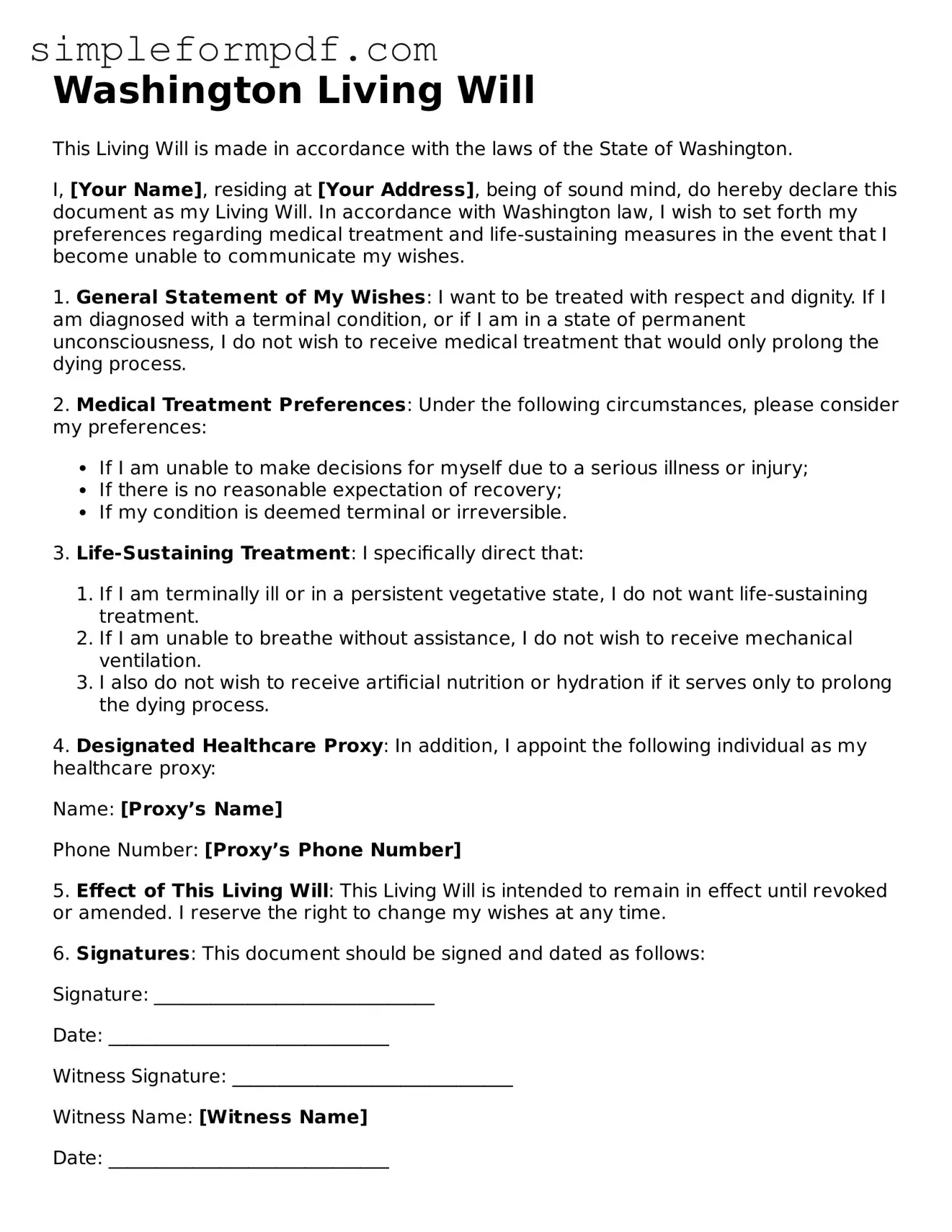Washington Living Will
This Living Will is made in accordance with the laws of the State of Washington.
I, [Your Name], residing at [Your Address], being of sound mind, do hereby declare this document as my Living Will. In accordance with Washington law, I wish to set forth my preferences regarding medical treatment and life-sustaining measures in the event that I become unable to communicate my wishes.
1. General Statement of My Wishes: I want to be treated with respect and dignity. If I am diagnosed with a terminal condition, or if I am in a state of permanent unconsciousness, I do not wish to receive medical treatment that would only prolong the dying process.
2. Medical Treatment Preferences: Under the following circumstances, please consider my preferences:
- If I am unable to make decisions for myself due to a serious illness or injury;
- If there is no reasonable expectation of recovery;
- If my condition is deemed terminal or irreversible.
3. Life-Sustaining Treatment: I specifically direct that:
- If I am terminally ill or in a persistent vegetative state, I do not want life-sustaining treatment.
- If I am unable to breathe without assistance, I do not wish to receive mechanical ventilation.
- I also do not wish to receive artificial nutrition or hydration if it serves only to prolong the dying process.
4. Designated Healthcare Proxy: In addition, I appoint the following individual as my healthcare proxy:
Name: [Proxy’s Name]
Phone Number: [Proxy’s Phone Number]
5. Effect of This Living Will: This Living Will is intended to remain in effect until revoked or amended. I reserve the right to change my wishes at any time.
6. Signatures: This document should be signed and dated as follows:
Signature: ______________________________
Date: ______________________________
Witness Signature: ______________________________
Witness Name: [Witness Name]
Date: ______________________________
By signing this Living Will, I affirm that I understand its content and consequences.
